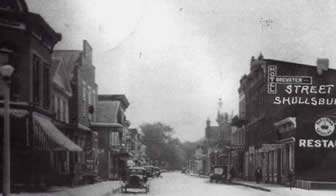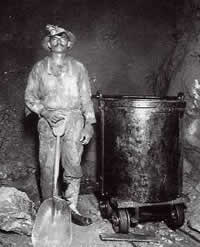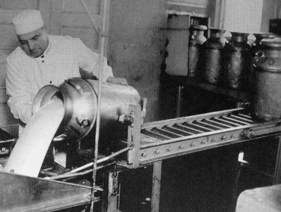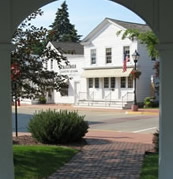Link to Mine History
Shullsburg History
City of Shullsburg | |
The City of Shullsburg dates as Wisconsin’s third oldest community. Prospectors from Galena arrived at the settlement on March 28, 1827, some twenty-one years before Wisconsin’s statehood, to find a “trader named Shull and four or five cabins occupied by perhaps 40 or 50 miners – mostly Irish.” Jesse Shull had arrived in the area in 1818, while working as a fur trader for John Jacob Aster, president of the American Fur Co. According to legend, Shull was once walking from Galena to Wiota when he stopped for lunch and observed a badger digging into a spring’s southern bank. When Shull investigated the badger’s diggings, he discovered small pieces of valuable mineral ore. More likely, Shull was shown the mineral deposits by Native Americans, though the end result was the same. He settled there, along the mineral deposit, and established the community that would eventually bear his name. |
 |
Irish miners dominated the area until the early 1840s (the community’s first name was actually New Dublin), when English settlers began to appear. By then, settlements in close proximity had joined with Shullsburg to form a law-respecting community. What is modern Shullsburg took its initial shape over the next ten years, with the first survey and platting occurring in 1846. During those years, figures of faith, such as Father Samuel Mazzuchelli, established religious congregations. The first store was built in 1841 and others followed quickly throughout that decade. Until 1861, Shullsburg served as the county seat for Lafayette County and home of the first county court-house, which was later used as a public school. Progress had its limits, though: as late as 1885 there were complaints of stray pigs and cows roaming the streets of town; in 1884, female teachers earned $22.50 per month to their male counterpart’s salary of $35.50 per month. |
 |
It was during the 1880s, though, that a significant mining boom and the extension of the Milwaukee and St. Paul Railroad helped finance the construction of many of Shullsburg’s beautiful downtown commercial buildings, which still stand today. By 1906 city waterworks and electricity had been added, cement sidewalks led to all parts of the city and a public library had opened. |
 |
In 1934, Anton Pederson, a young Danish immigrant started butter and cheese production in Shullsburg, and ushered in Shullsburg's second major industry. The Shullsburg Creamery still remains and distributes Shullsburg Cheese, which is recognized for its quality throughout the midwest. |
|
Through the 20th Century, the mines continued to support the city’s economy. They provided an especially important role during World War II, when until they finally closed in the 1970s. For nearly twenty years that followed the economy continued to decline, and the old beautiful buildings on Water Street fell into disrepair. In the late 1980s, though, the Water Street business district, now a National Historic Landmark, took on new life. One-by-one its buildings were saved through caring restoration. Now they house a variety of unique shops, restaurants and guest rooms. While treasuring its past, Shullsburg has found new hope for the future. |
 |

